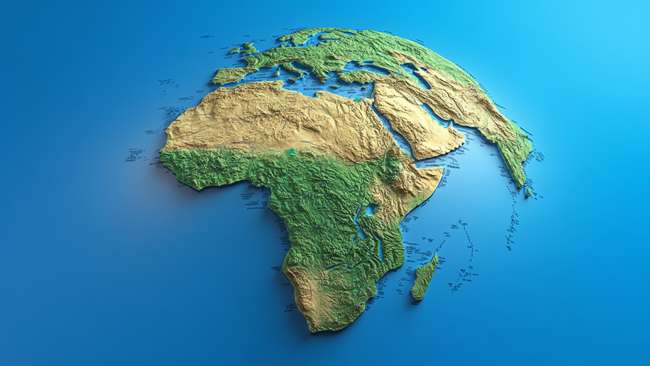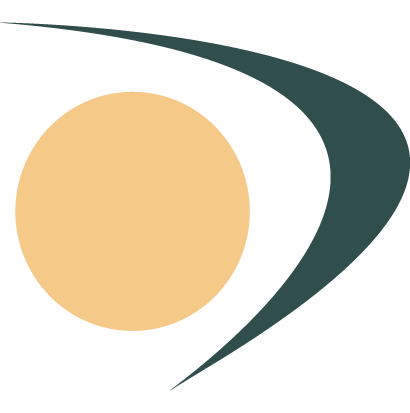African Languages: History, Classification, and Modern Challenges
 After gaining independence, some African countries have to date experienced a multilingual history associated with a blend of language expansion, language contact, cultural shift, and language loss. African languages, in particular, showcase this rich diversity.
After gaining independence, some African countries have to date experienced a multilingual history associated with a blend of language expansion, language contact, cultural shift, and language loss. African languages, in particular, showcase this rich diversity.
As home to approximately one-third of the world’s languages, it has become a center of interest for language diversity research. The diversity of languages in Africa is evidenced by the number of languages spoken on the continent. The estimated number of languages natively spoken in Africa is anywhere around 2100 to 3000, with most having more than one million speakers.
Yet, only about 22 of these languages are supported by businesses across the globe, making speakers of African languages underserved as they receive support mostly in Arabic colonial languages.
African languages are classified into different language families as a result of ancestry, religious beliefs, and other factors. According to SIL Ethnologue, Nigeria, the most linguistically diverse country in Africa, has over 500 languages spoken natively that belong to different African language families.
There are many different language families to which the languages of Africa belong, below are four major language families.
Classification of African Languages
1. Niger-Congo
With approximately 1,350 – 1,650 languages, the Niger-Congo language family is the largest African family of languages and interestingly the largest language family in the world. The languages that constitute the Niger-Congo language family are all completely distinct and not particularly dialectal. They each have their geographic roots from the Western, Central, Eastern, and Southern parts of Africa. The most widely spoken languages of Africa, Igbo (30 million), Fula (35), Yoruba (45 million), and Swahili (200 million) are all part of the Niger-Congo family. In some Northern parts of Nigeria and Uganda, the majority of the population speaks the Niger-Congo language. From Mombasa, Kenya (eastward) to Dakar, Senegal (westward) to Cape Town, South Africa, the Niger-Congo languages are tonal.
2. Afroasiatic
The next largest language family in Africa is Afroasiatic with about 200-300 member languages. The Afroasiatic languages are found in the Northern regions of Africa, which include countries like Eritrea, Ethiopia, Somalia, and northern Nigeria (Hausa). It is also spoken in the North African countries of Africa which includes Algeria, Morocco, and Tunisia. Some Afroasiatic languages include Somali, Berber, Hausa, Amharic, and Oromo.
3. Nilo-Saharan
The third largest language family in Africa is Nilo-Saharan. It is a family with an estimated 80-90 member languages. The Nilo-Saharan languages emanate from both Eastern Africa and the North Eastern region of Africa. Major countries that speak the languages include Chad, parts of Kenya, Tanzania, Sudan, and Uganda. Some of the popular Nilo-Saharan languages are Kanuri, Fur, Songhay, Nobiin, Luo, Dinka, and Maasai. Just like the Niger-Congo language, Nilo-Saharan languages are tonal.
4. Khoi-San
The oldest and smallest of the four language families is the Khoi-San family. It is found mainly in Southern parts of Africa and boasts over 40-70 member languages. The Khoi-San language family is tonal and is known for click consonants. Two examples are Zulu and Xhosa.
Other language families include the Austronesian language family, which originates from Asia and is spoken mainly in Madagascar, and the Indo-European language family, which originates from Europe and is spoken mainly in South Africa.
Linguistic Features of Languages Spoken in Africa
In Africa, languages are primarily oral with only a few available in written form. However, it is interesting to know that the languages of Africa have notable linguistic features, evident in both written and oral forms
It is impossible today to discuss African languages without mentioning their linguistic features. This is because the knowledge of the difference in linguistic attributes fosters a better understanding of language contexts when spoken. Additionally, some linguistic features like tones and semantics are what deepen the appreciation for the continent’s Language diversity.
The linguistic features of African languages can be traced back to language contact as a result of colonization, migration and trade, religious beliefs, cultural transitions, and other experiences that have shaped Africa’s current linguistic landscape.
There are three major linguistic features of languages spoken in Africa. Here is a deeper dive into the subject.
1. Phonological
The majority of the languages of Africa have phonological features which include
- Ejective, explosive, and labiodental flaps consonants, and clicks in Southern Africa.
- Labial-velar stops are found in the Southern Sahara.
- Nasal stops are found majorly in Western Africa.
- Tonal systems are heard among some Afroasiatic branches and the majority of the Niger-Congo language speakers. Both the Koi-San and the Nilo-Saharan languages are fully tonal.
2. Syntactic
The common syntactic structure of African languages includes the use of common adjectival, comparative, and auxiliary verbs. It is rare to find an African language that does not have syntactic features. It is important to note that some syntactic features of the languages of Africa can be distinguished only by tone.
3. Semantics
There is a widespread semantic feature that is evident in the languages of Africa. Most often, one term is used for two different, but sometimes similar items. For example, in Western Africa, Mama is used for both the animal and meat.
10 Most Popular African Languages
1. Swahili
The most spoken language in Africa is Swahili which has an estimated 100 to 150 million speakers. It is known as a ‘Bantu’ language and is believed to have originated from the Arabic language. Swahili is the official language of the Democratic Republic of Congo, Kenya, Tanzania, and Uganda. Although not widely spoken, it is also spoken in some parts of Burundi, Ethiopia, northern Mozambique, Rwanda, southern Somalia, Sudan, and the Comoros Islands. In these regions, Swahili is the main language of communication in educational institutions. A fun fact about the Swahili language is that it was used in the most popular animation, The Lion King. Hakuna Matata, in Swahili, translates to ‘No worries’ in the English language and Simba means lion.
2. Amharic
As one of the widely spoken languages in Ethiopia, Amharic boasts over 20 million speakers. Amharic is an African language that is not only used orally but written using the Fidel writing system. It is interesting to note that the capital of Ethiopia, ‘Addis Ababa’ is an Amharic word for ‘new flower.’
3. Yoruba
Yoruba is the language of the people of Western Nigeria. It is spoken by over 30 million speakers in Africa, particularly in Nigeria, Benin, and Togo. The Yoruba language has over 15 dialects including Akoko, Ekiti Ijebu, Ijesha, and Oworo. The original speakers of this language known as the Yoruba Ethnic Group, are the largest in the world.
4. Hausa
Hausa is a widely spoken language with roots in Northern Nigeria. It has over 40 million speakers and is spoken in parts of some African countries including Benin, Burkina Faso, Chad, Eritrea, Ghana, Congo, Niger, Sudan, Cameroon, Togo, and other North African countries.
5. Igbo
Igbo is a language that originated from the Eastern parts of Nigeria. It is also spoken in countries like Cameroon and Equatorial Guinea where the Igbo speakers dominate. It has over 20 distinct dialects including Owerri and Central Igbo. Igbo is the most preferred literary language taught in Nigerian schools. This made the language gain relevance in the Nigerian literary society which made it gain more relevance in the whole world today.
6. Oromo
Oromo is a significant language spoken in parts of Ethiopia, Kenya, Somalia, and Egypt. An estimated 30 million people use this language. In Ethiopia alone, the speakers and people of Oromo account for over 40% of the population. Writing the Oromo language was initially forbidden and considered a crime between 1974 and 1991. However, Oromo scholars adopted a Latin script and used it to teach reading and writing.
7. Zulu
Zulu is a widely spoken language of South Africa. Over 10 million people use this language. Zulu is part of the Bantu language family and is related to Xhosa and Ndebele languages. In fact, one could actually mistake Zulu for Xhosa because they sound similar. Another interesting fact is that Zulu is not just a language, it is also the name of the largest ethnic group in South Africa.
8. Shona
Shona is a language spoken in Zimbabwe. It is a language used by approximately 10 million speakers. Shona belongs to the Bantu language family and uses the Latin script writing system. Three distinct Shona dialects include the Karanga, the Zezuru, and the Korekore. The language has two different versions for two distinct purposes. The low version of the language is used for casual communication at home while the high version is used during prayers.
9. Berber
Berber is an Afro-Asiatic language spoken by the Indigenous people of the Magreb region of North Africa known as the Berber people.
This group resides in scattered communities across Egypt, Burkina Faso, Mali, Morrocco, Algeria, and Mauritania.
10. Arabic
The Arabic language is the sixth most spoken language in the world and is spoken by over 280 million people worldwide. It is also spoken in African countries like Algeria, Egypt, Eritrea, Libya, Morocco, Mauritania, and Tunisia. Modern Standard Arabic is used to write the language While Classical Arabic is used academically to teach the language.
Conclusion
The languages of Africa are not static at all. Yet, there are still many languages that are unrecognized unless intentional efforts toward linguistic revitalization and preservation are made. A good start to achieving this goal is through the standardization of endangered languages.
This can be achieved by making most languages of Africa the official language of education, trade, and government. This will promote national unity, economic advancement, as well as linguistic preservation. Learn more about African languages and cultures in Language and Culture.
References:
